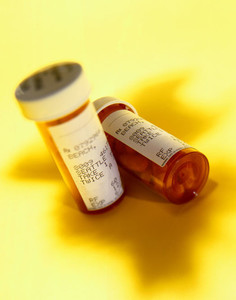The Sustaining Generic Medicines Markets in Europe report (April 2006), produced by the Research Centre for Pharmaceutical Care and Pharmaco-economics and authored by Professor Steven Simoens and Ms Sandra De Coster, offers a country-by-country analysis of generics markets in Europe and discusses factors both hindering and aiding the development of generics markets.
Recommendations to strengthen generic medicines markets
Home/Reports
|
Posted 04/05/2010
 0
Post your comment
0
Post your comment

1. Introduce a coherent generic medicines policy
An effective policy would include both supply-side measures such as pricing and reimbursement, alongside demand-side measures, such as incentives for physicians, pharmacists, and patients. Policy needs to be coherent, mutually reinforcable among its component parts, and properly enforced.
2. Encourage price differentiation/competition within existing regulatory frameworks
A free pricing system within the context of a reference pricing system may hold benefits, though the effectiveness of different pricing schemes may depend upon the maturity of the generics market in question. Pricing information should be transparent. A system whereby drugs that compete against each other by virtue of price holds advantages compared with one where they compete by virtue of discounts available to pharmacists. This can help ensure that health insurance funds are properly allocated according to value.
3. Disseminate pricing information to actors
When all stakeholders are fully aware of the price difference between originator and generic medicines, incentives can be properly constructed and put into practice. This can influence the drugs patients ask for, physicians prescribe, and pharmacists dispense. Various means, such as databases, electronic prescription systems, treatment guidelines and protocols, and pricing guides, exist to publicise the prices of medicines.
4. Increase confidence of stakeholders in generic medicines
Programmes on a national level can aid in this initiative by providing the appropriate information about the benefits of generic medicines to the relevant parties.
5. Provide incentives for physicians to prescribe generic medicines
In the absence of a compelling therapeutic rationale, physicians should be encouraged to prescribe lower-cost generic medicines. This can be effected through improved prescribing education (i.e. use of INNs), demonstrations of savings on an individual and national level, and support mechanisms that facilitate prescribing of generic medicines by physicians, such as electronic prescribing systems, substitution lists, more interaction between physicians and pharmacists, feedback on prescribing data, and medicines databases.
6. Remove financial disincentives for pharmacists to dispense generic medicines
Remuneration schemes for pharmacists that are neutral or favour the dispensing of generic medicines will likely result in greater generics usage.
7. Provide incentives for patients to demand generic medicines
This can take the form of monetary incentives or disincentives (i.e. penalties) for patients and also information programmes that educate patients.
Related articles
Savings from generic medicines use
Policies that advance the use of generic and biosimilar medicines
Recommendations for developing generic medicines markets
Strengths and weaknesses of developing generic medicines markets
Recommendations for mature generic medicines markets
Strengths and weaknesses of developing mature medicines markets
Overview of the Sustaining Generic Medicines Markets in Europe
Reference
Simoens S, De Coster S. Sustaining Generic Medicines Markets in Europe. April 2006.
Guidelines
New guidance for biologicals in Pakistan and Hong Kong’s independent drug regulatory authority
Canada poised to remove requirement for Phase III trials for biosimilars
Policies & Legislation
ANVISA tackles 24-month backlog in biologicals post-registration petitions
US EO: delivering Most-Favored-Nation Prescription Drug Pricing to American patients
Advancing biologicals regulation in Argentina: from registration to global harmonization

Home/Reports Posted 10/10/2025
China-to-West pharma licensing deals surge in 2024 amid innovation push

Home/Reports Posted 22/05/2025
The best selling biotechnology drugs of 2008: the next biosimilars targets








Post your comment